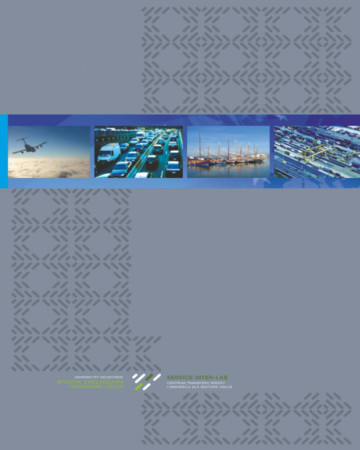
ISSN: 1644-275X
eISSN: 2353-3005
OAI
DOI: 10.18276/ptl.2017.39-06


Issue archive /
nr 3 (39) 2017
NOWE KONCEPCJE ZŁAGODZENIA PROBLEMÓW ROZWOJU INFRASTRUKTURY TRANSPORTU W POLSCE
(NEW CONCEPTS OF REDUCING PROBLEMS IN THE DEVELOPMENT OF TRANSPORT INFRASTRUCTURE IN POLAND)
| Authors: |
Krystyna
Wojewódzka-Król
Wydział Ekonomiczny, Uniwersytet Gdański, Sopot |
| Keywords: | Transport transport infrastructure sustainable developmen |
| Data publikacji całości: | 2017 |
| Page range: | 12 (59-70) |
| Klasyfikacja JEL: | R40 |
Abstract
Transport infrastructure in Poland does not meet the requirements of sustainable development, which is felt by the whole economy, among other things due to congestion, limited accessibility of regions or weakening the competitive position of Polish seaports. The way to mitigate the problems of adaptation of transport infrastructure to the needs of the economy may be the development of inland waterways, especially those, which could relieve the transport problems in the seaport hinterland or reduce the congestion on the roads. An alternative to high-speed rail, which is very controversial in Poland, may be the concept of hyperloop, The way to sustainable transport development is also to implement infrastructure solutions, that enable the integration of transport modes.
Download file
Article file
Bibliography
| 1. | BCG (2017). The 2017 European Railway Performance Index, 2017. Pobrane z: www.bcg.com/pl-pl/publications/2017/transportation-travel-tourism-2017european-railway-performance-index.aspx (18.08.2017). |
| 2. | Deloitte & Targeo (2016). Raport o korkach w 7 największych miastach Polski Warszawa, Wrocław, Kraków, Poznań, Gdańsk, Łódź, Katowice. Dane za rok 2015. Warszawa. |
| 3. | Engelhardt, J. (2016). KDP – wyzwanie rozwojowe polskiego transportu. Sopot: Konferencja Transopot 2016. |
| 4. | GDDKiA (2016). Raport o stanie nawierzchni dróg krajowych na koniec 2015 roku. Warszawa. |
| 5. | Hyperpoland (2017). Spacex Hyperloop Pod Competition II. Pobrane z: www.hyperpoland.com/news.html#news-1 (10.04.2017). |
| 6. | IBnGR (2016). Atrakcyjność inwestycyjna województw i podregionów Polski 2016. Gdańsk. |
| 7. | PKP PLK (2010). Program budowy linii dużych prędkości w Polsce. Uwarunkowania społeczne i ekonomiczne. Warszawa. |
| 8. | PKP PLK (2015). Raport Roczny. |
| 9. | Port Gdańsk (2017). Port Gdańsk dla Polski. Pobrane z: http://www.portgdansk.pl/o-porcie/port-gdansk-dla-polski (18.08.2017).Uchwała nr 79 Rady Ministrów z dnia 14 czerwca 2016 r. – Założenia do planów rozwoju śródlądowych dróg wodnych w Polsce na lata 2016–2020 z perspektywą do roku 2030. |
| 10. | Dz. Urz. RP z 2016 r., poz. 711. |
| 11. | Urbański, K. (2017). Hyperloop – kolej na przyszłość. Pobrane z: www.forbes.pl/hyperloop-szybka-kolej-nadchodzi-rewo-lucja,artykuly,204963,1,1.html (26.03.2017). |
| 12. | Wojewódzka-Król, K., Rolbiecki, R. (2017). Społeczno-ekonomiczne skutki zagospodarowania dolnej Wisły. Gdańsk: Acta Energetica. |